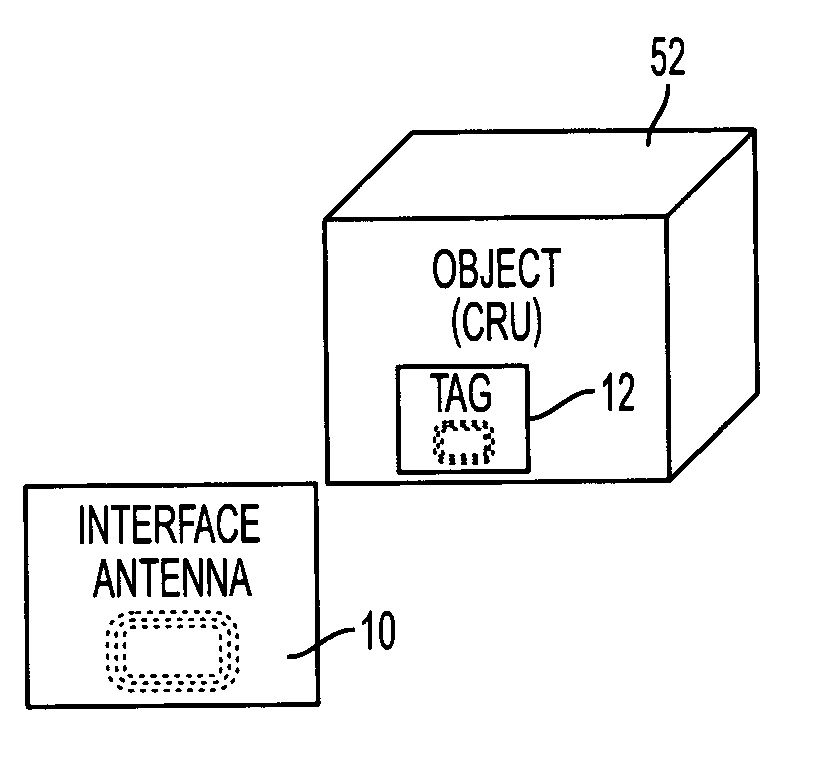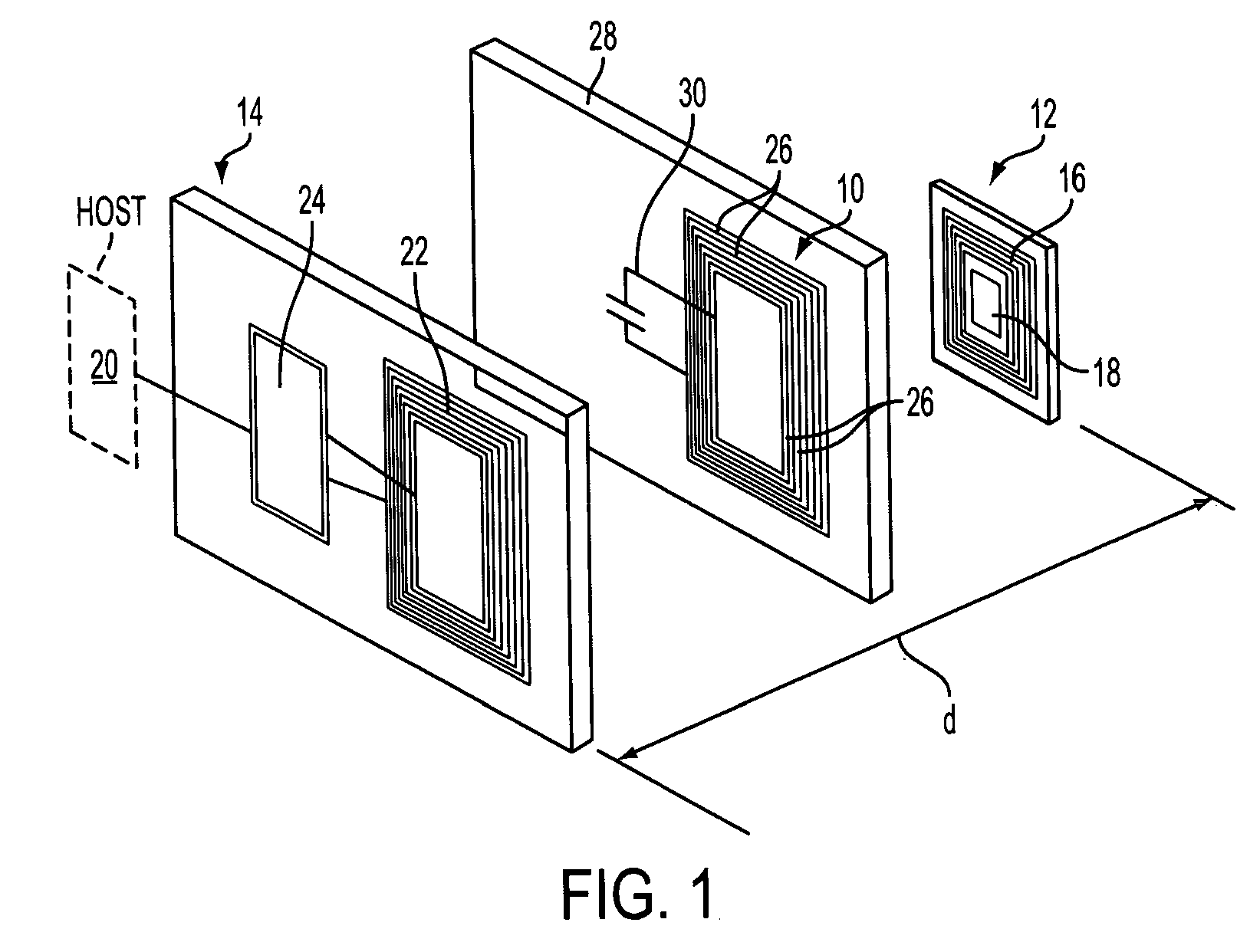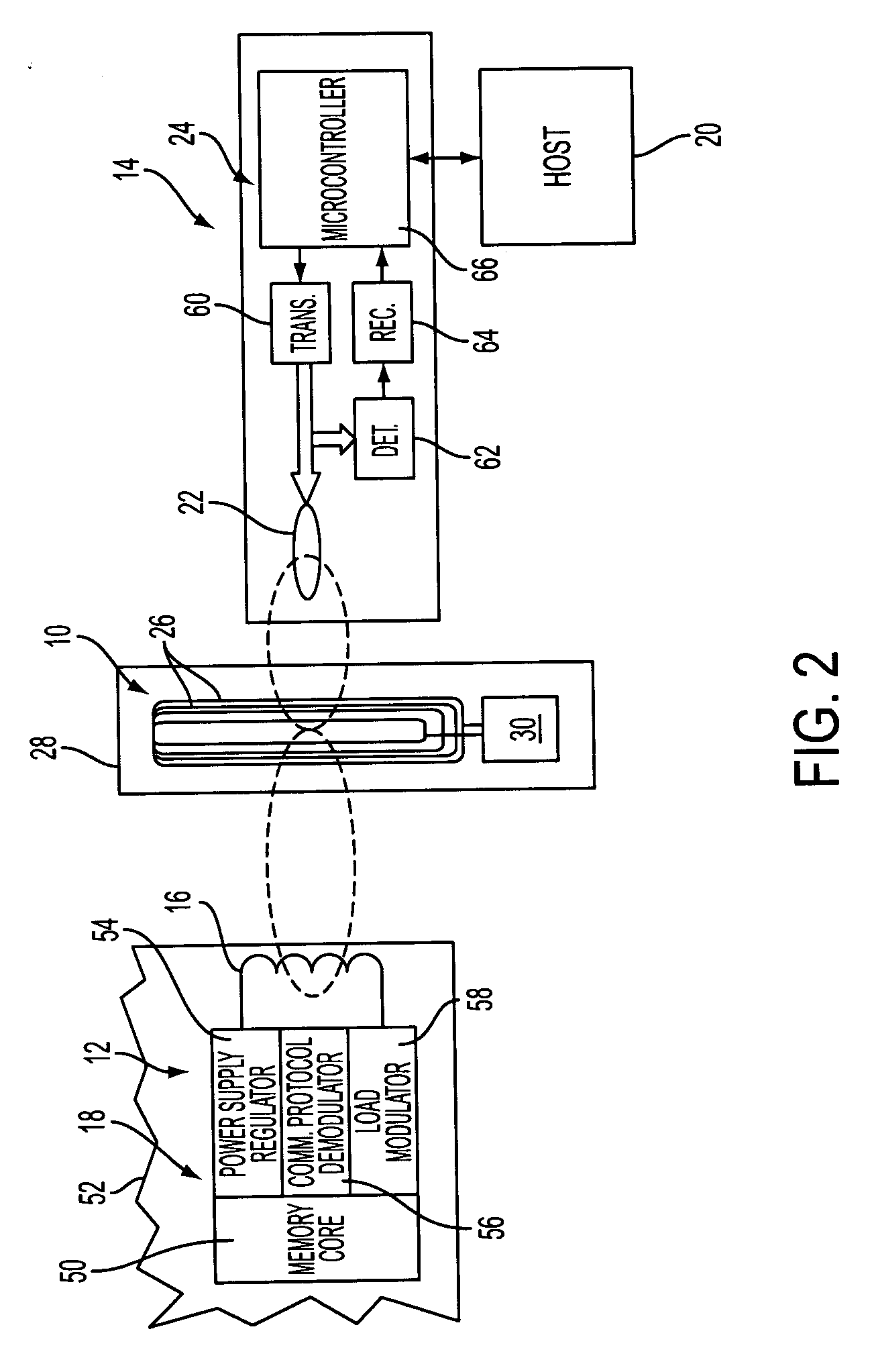Interface antenna
a technology of interface antenna and antenna, which is applied in the direction of instruments, burglar alarm mechanical actuation, electrographic process, etc., can solve the problems of unfavorable communication between readers and designers, and achieve the effect of increasing the distance over which the tag can communica
- Summary
- Abstract
- Description
- Claims
- Application Information
AI Technical Summary
Benefits of technology
Problems solved by technology
Method used
Image
Examples
Embodiment Construction
[0025]FIG. 1 depicts an interface antenna 10 for increasing a distance over which a tag (also known as a transponder) 12 can communicate with a reader (also known as an interrogator, transceiver, or coupler) 14. The tag 12 is typically attached to an object (not shown), and includes a tag antenna 16 and an integrated circuit (IC) device 18. Stored within the IC device 18 is information related to the object to which the tag 12 is attached. While this information usually includes identification data for the object, it may include other information related to, or used by, the object, as will be described in further detail hereinafter. It is contemplated that the object to which the tag 12 is attached may be any tangible item. In one embodiment, described hereinafter with respect to FIG. 8, the object includes a replaceable module for a machine, also referred to as a CRU (Customer Replaceable Unit), and the tag 12 is configured as a CRUM (Customer Replaceable Unit Monitor).
[0026] The ...
PUM
 Login to View More
Login to View More Abstract
Description
Claims
Application Information
 Login to View More
Login to View More - R&D
- Intellectual Property
- Life Sciences
- Materials
- Tech Scout
- Unparalleled Data Quality
- Higher Quality Content
- 60% Fewer Hallucinations
Browse by: Latest US Patents, China's latest patents, Technical Efficacy Thesaurus, Application Domain, Technology Topic, Popular Technical Reports.
© 2025 PatSnap. All rights reserved.Legal|Privacy policy|Modern Slavery Act Transparency Statement|Sitemap|About US| Contact US: help@patsnap.com



